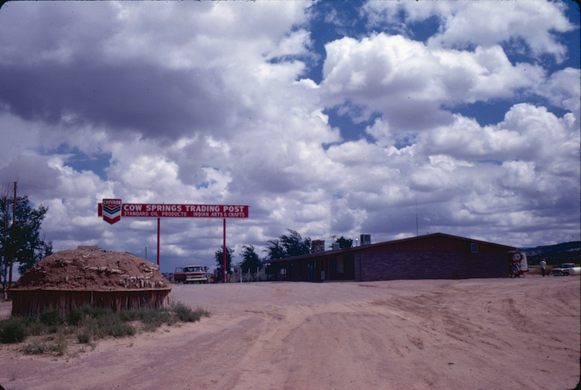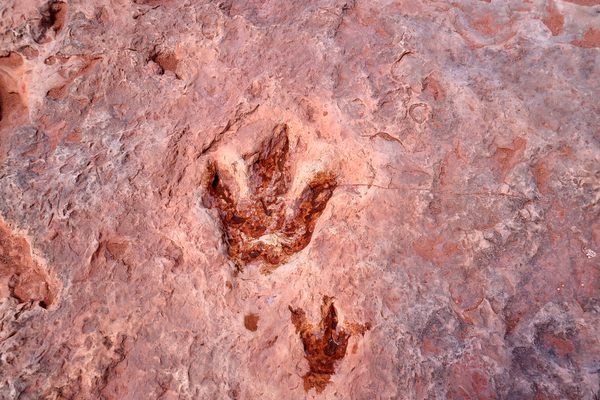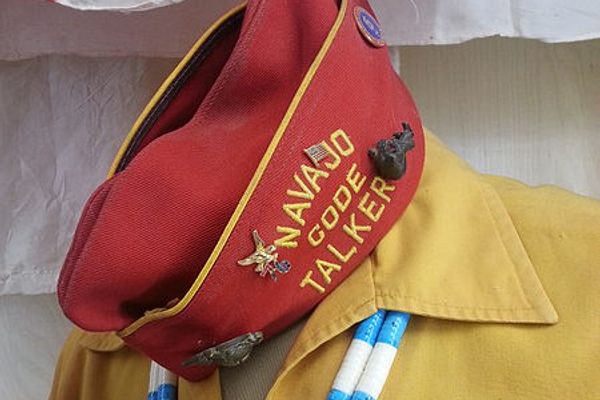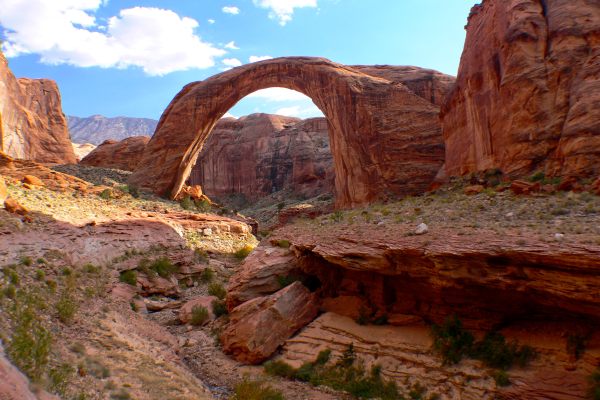Cow Springs Trading Post
The graffiti-covered ruins of an abandoned trading post in the middle of Navajo Nation.
Located on the Navajo Nation in Arizona, about halfway between Kayenta and Tuba City, Cow Springs Trading Post sees few outsiders. Most tourists who come through, passing between Monument Valley and Flagstaff, would barely give it a second glance out their car window. Its defining feature is a peeling brown and white Standard Oil sign that probably dates back to the 1960s, but the trading post below is now nothing more than a few crumbling stone walls covered in graffiti.
There were once several trading posts in the area, which served as stores where reservation residents could trade things like wool, crafts, and agricultural products for dry goods and tools, and also acted as banks, courthouses, and meeting places. The Navajo Nation’s isolation in the northeastern corner of Arizona left its people open to abuse by the European traders who operated the trading posts. Usury, price-fixing, and withholding of government-issued checks were all standard practices during their heyday. Because few retailers have set up shop on the reservation, the tribe is still forced to rely on these trading posts for some basic goods.
There are no known photos of the Cow Springs Trading Post during its operational period, and little has been written about it. It was owned by the Babbitt Family, who owned several other trading posts in the area, and then it was shuttered in the 1970s.
In the 50 or so years since Cow Springs Trading Post closed its doors, most of what was there has been removed. It’s believed that all of the wooden beams were taken for firewood and any kind of metal was stripped away for scrap. Only the concrete blocks remain, providing an ample canvas for artists.
While much of the graffiti consists of simple tags and gang signs, a few of the pieces are more elaborate and express deeper feelings about politics and life on the reservation. Some are political messages, others hint at feelings of hopelessness, but a few strive for a more positive outlook.
Several years ago, an artist by the name of Jetsonorama created some beautiful murals at Cow Springs by enlarging sections of his photographs documenting life on the reservation and meticulously assembling them into a mosaic. Unfortunately, his murals, consisting of nothing more than office paper wheatpasted to the concrete walls, have long since been lost to the elements and the passage of time.
Know Before You Go
Even though it’s in a fairly isolated location, Cow Springs is relatively safe during the daytime. The highway gets a decent amount of traffic, and the ruins are easily visible from the road. At night, though, you could run into squatters or would-be graffiti artists who may not be pleased to have company. To get a better understanding of the Navajo peoples’ way of life, stop by the interpretive center in Tuba City as well.
Community Contributors
Added by
Edited by
Plan Your Trip
The Atlas Obscura Podcast is Back!






















Follow us on Twitter to get the latest on the world's hidden wonders.
Like us on Facebook to get the latest on the world's hidden wonders.
Follow us on Twitter Like us on Facebook